
The brown hairstreak is a butterfly in the family Lycaenidae. The range includes most of the Palaearctic.

The purple hairstreak is a butterfly in the family Lycaenidae distributed throughout much of Europe, North Africa, Anatolia, Caucasia, and Transcaucasia. The larva feeds on Quercus robur, Quercus petraea, Quercus cerris and Quercus ilex.
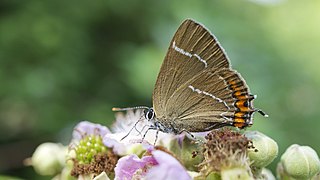
The white-letter hairstreak is a butterfly in the family Lycaenidae.

The black hairstreak is a butterfly in the family Lycaenidae.
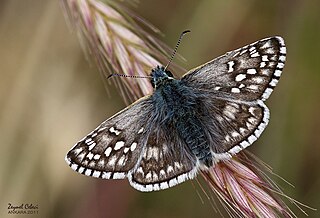
Pyrgus sidae, the yellow-banded skipper, is a species of skipper. It is found in from the Iberian Peninsula through southern and eastern Europe, southeast France, the northwestern coastal areas of central Italy, then Istria and the Balkan peninsula, across Turkey, Transcaucasia, to Iran and Afghanistan. East of the Southern Ural mountains the range extends to northwest Kazakhstan and the west of the Tien Shan in the north.
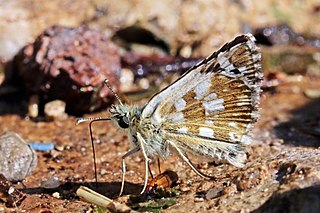
The sandy grizzled skipper is a species of skipper. It has a restricted range in southeastern Europe with a small relict population in central Spain.

The scarce copper is a butterfly of the family Lycaenidae.

Satyrium esculi, the false ilex hairstreak, is a butterfly in the family Lycaenidae. The species was first described by Jacob Hübner in 1804.

Satyrium acaciae, the sloe hairstreak, is a butterfly in the family Lycaenidae.

Melitaea didyma, the spotted fritillary or red-band fritillary, is a Palearctic butterfly of the family Nymphalidae.

Leptotes pirithous, the Lang's short-tailed blue or common zebra blue, is a butterfly of the family Lycaenidae.

Polyommatus daphnis, the Meleager's blue, is a butterfly of the family Lycaenidae.

Muschampia proto, the sage skipper, is a butterfly of the family Hesperiidae. It is found in Morocco, Algeria, the Iberian Peninsula and southern France.

Muschampia tessellum, the tessellated skipper, is a butterfly of the family Hesperiidae. It is found from the southern Balkan Peninsula through Ukraine, southern Russia and Asia Minor, southern Siberia, Mongolia, east to the Amur region.

Polyommatus (Plebicula) dorylas, the turquoise blue, is a butterfly of the family Lycaenidae. It is found in southern Europe, Asia Minor, the Ural Mountains, Caucasus and Transcaucasia. Its wingspan is 15–17 mm. The butterfly's common name comes from the dazzling bright blue colour of male's wings. The larvae feed on Anthyllis vulneraria. The butterfly flies from May to September in two generations. Habitats include flowery meadows in rocky areas at 500–2000 m.

The twin-spot fritillary is a butterfly in the family Nymphalidae.
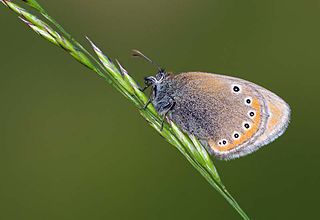
Coenonympha leander, the Russian heath, is a butterfly belonging to the family Nymphalidae. It is found in northern Greece, Hungary, Bulgaria, southern Russia, Asia Minor, Armenia and Iran. The habitat consists of warm grassy areas.
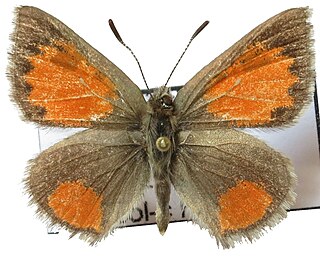
Tomares callimachus, the Caucasian vernal copper, is a butterfly of the family Lycaenidae. It is found in Anatolia, Iraq, Iran, the Caucasus, and Transcaucasia.

Tomares nogelii is a small butterfly found in the Palearctic that belongs to the blues family.
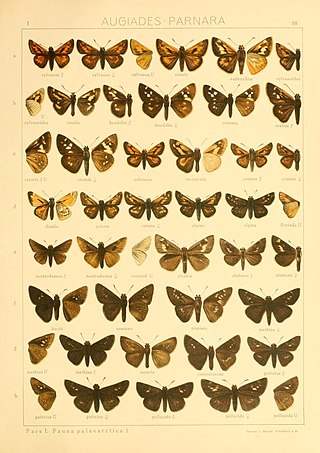
Eogenes alcides is a butterfly found in the East Palearctic Asia Minor to Iran, Afghanistan to Pakistan, West China. that belongs to the skippers family. Subspecies E. a. ahriman is found in Turkestan.




















